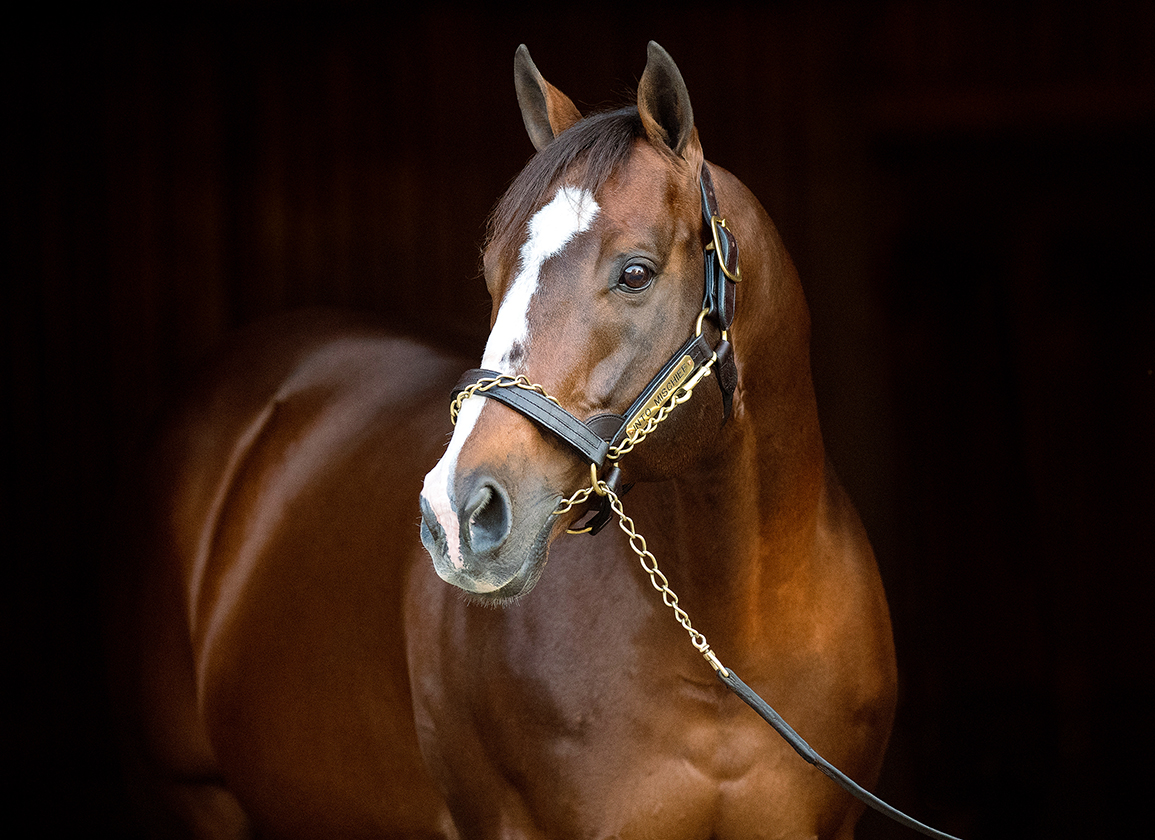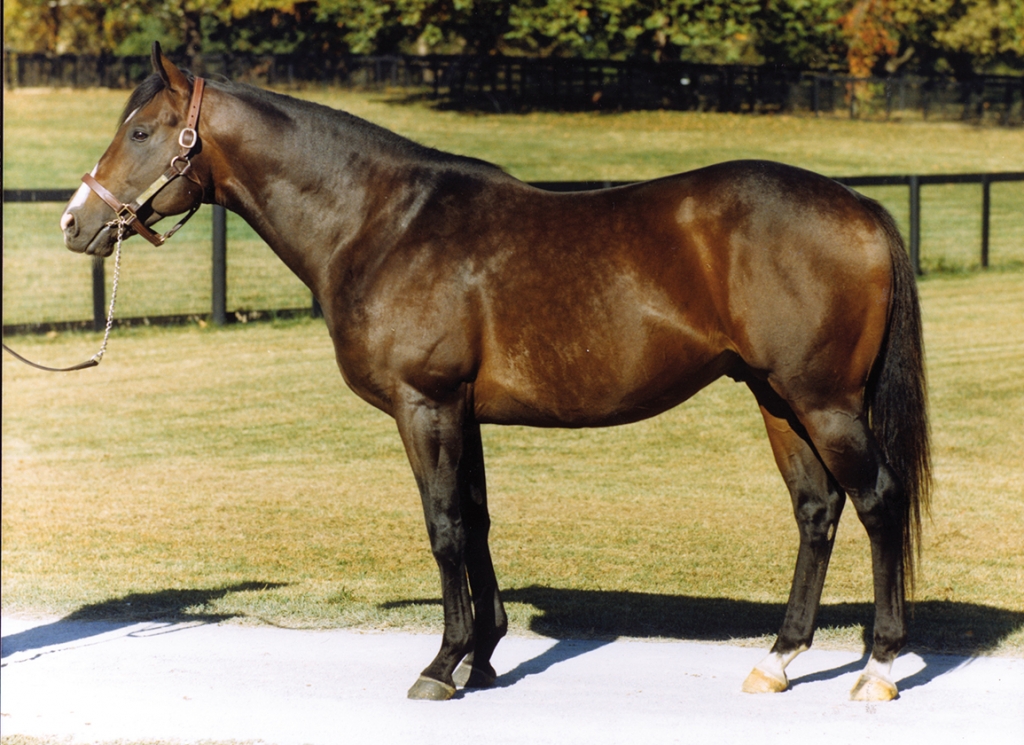By Chris McGrath
As a year of unprecedented achievement draws to a close, the distribution of laurels among our champion stallions must first and foremost celebrate their sheer potency. For while we already know Into Mischief to be a phenomenon, he demands fresh admiration in sealing his third consecutive general sires' championship with a prizemoney haul just shy of $25 million, shattering the $22,507,940 record he set in his second; the work of 260 winners, similarly raising the bar giddily on the 221 who compiled his first. As the revelation of the year, equally, Gun Runner reached uncharted territory in the freshman's table, his tally of $4,209,350 surpassing the record of $3,717,490 set by Uncle Mo in 2015.
For these twin peaks to have been scaled simultaneously, however, also requires us to reflect on what such a historic coincidence might tell us about the changing nature of this business. Whatever else he achieves, Into Mischief is presumably going to end up the most prolific champion sire in the story of the breed, measured by simple volume of paternity. Yet that does not seem to have eroded his efficiency. His ratios, in producing elite stock this year, remain competitive or better with the other leading stallions, and best of all–if only just–in terms of black-type performers at almost precisely 16%.
(All figures, incidentally, are correct on TDN's database through Dec. 29. In any final analysis, minor updates will obviously be required to incorporate the final two days' sport of the year.)
On one level, you couldn't ask for better evidence of the functionality we seek–but rarely find–in every stallion prospect. In the axiom of one of the masters of this trade, John Sikura, the genetic switch is either “on” or “off”. Into Mischief famously overcame the modesty of his first covers, in both quality and quantity, to brandish an unmissable capacity to impart prowess to his stock. Gun Runner, as a Horse of the Year starting at $70,000, had all the advantages Into Mischief lacked at the outset. Nonetheless he appears to have cut straight through the kind of mitigations we would often expect to offer a two-turn stallion who reached his peak in his third campaign.
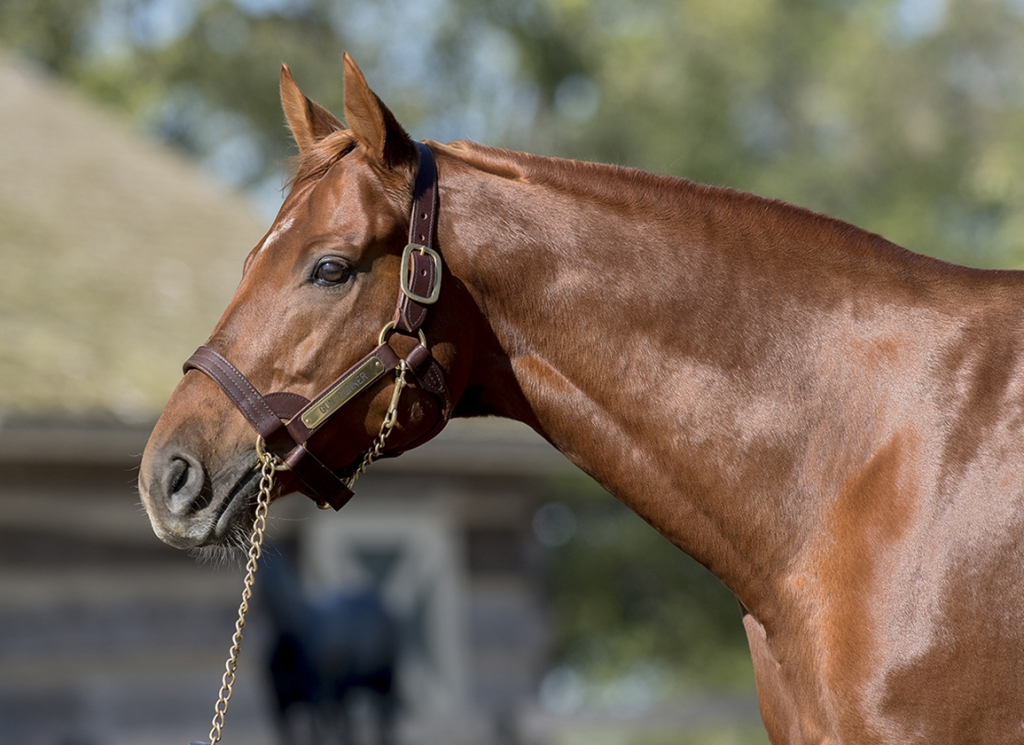
Gun Runner | Sarah Andrew
If his stock can still abide by original presumptions, and build higher yet on this foundation of unexpected precocity, then Gun Runner will surely join Into Mischief among that premier tier of stallions who sustain the commercial primacy of the “bull” over the “herd”. (Which is a question far more fundamental than their useful promiscuity, relative to the mares necessarily confined to a single progeny every year.)
But if the genetic “switch” has a primal quality, then the scale against which we measure stallions is not so absolute. It will fluctuate with an ever-changing environment. As champion freshman in 1984, Danzig had just 13 starters. These included 11 winners, nine stakes horses and three Grade I winners, including the champion juvenile colt. Two made the Derby podium the following May. Nowadays, in contrast, veterinary vision and commercial myopia together ensure that new sires constantly inundate the gene pool.
When that process discloses a Gun Runner, that's fine. He has had 62 starters from 115 named foals in his debut crop, the result of 171 covers; and we'll detail his success below. But Klimt, who has launched 79 juveniles without finding a stakes winner, has reportedly been exported to Turkey already. And obviously every intake will include Klimts by the dozen for every Gun Runner.
Pending The Jockey Club's attempt to restrict book sizes, however, the industry appears to be widely and wholeheartedly committed to volume. I guess the question is whether the damage done by prolific duds is adequately addressed by those whose switch is “on”. And that's why it's important for Into Mischief and others to demonstrate that the intensity of their impact is not diluted by its expansion.
Who knows, conceivably Danzig's breed-shaping legacy around the world might have been still greater, had he covered mares on the same industrial scale as Into Mischief. Being additionally blessed by fertility and libido, the Spendthrift champion has been able to maintain huge books even as his fee has soared, with a staggering 250 mares at $175,000 in 2019, and 214 even at $225,000 last spring. He commands $250,000 for the coming season, but the fact is that his 2022 sophomores will be his first conceived even at six figures–and, pending the outcome of what has tragically become a posthumous saga about Medina Spirit (Protonico), this incoming Classic crop may well be seeking to give Into Mischief a third consecutive GI Kentucky Derby.
That would sit very nicely with this third general sires' title off the reel, a distinction shared most recently with Tapit (2014-2016) and, before him, Danzig himself (1991-1993). But the overall trajectory of Into Mischief's career is such that perhaps only the unaccountable bounties nowadays available in the desert inhibits sacrilegious speculation about Bold Ruler's streak of seven in the 1960s.
These modern megaprizes, of course, permit a single horse's wild distortion of the overall standings: in 2017, for instance, Unbridled's Song would have finished 44th, not first, but for Arrogate. Down the line, perhaps, we must try to devise a way of levelling out the playing field. Otherwise we will someday end up with a champion sire long since exported to Uruguay, who happens to have left behind a standout who wins the G1 Saudi Cup and G1 Dubai World Cup.
As it is, much the most striking aspect of Into Mischief's record $24,945,619 earnings in 2021 is how widely his best performers have spread their contributions. His premier earner is Mandaloun, with $1,560,000 as things stand, though he may yet get that Derby windfall. That represents just 6.3% of his sire's overall bank for the year, compared with the whopping 45.5% contribution made by Mystic Guide to the $16.2-million haul of runner-up Ghostzapper.
Into Mischief admittedly owed 31.9% of his 2020 total to Authentic, but he would still have been champion even without his Horse of the Year. And the previous year Covfefe banked just 5.5% as the premier contributor to his sire's first title.
That looks the most instructive measure of both the legitimacy and the sustainability of the dominion established by Into Mischief. For while he may have fielded more runners than any other sire, at 444, they include not just that record-breaking number of individual winners but also 71 black-type horses. As noted already, no other sire surpasses that clip–quite.
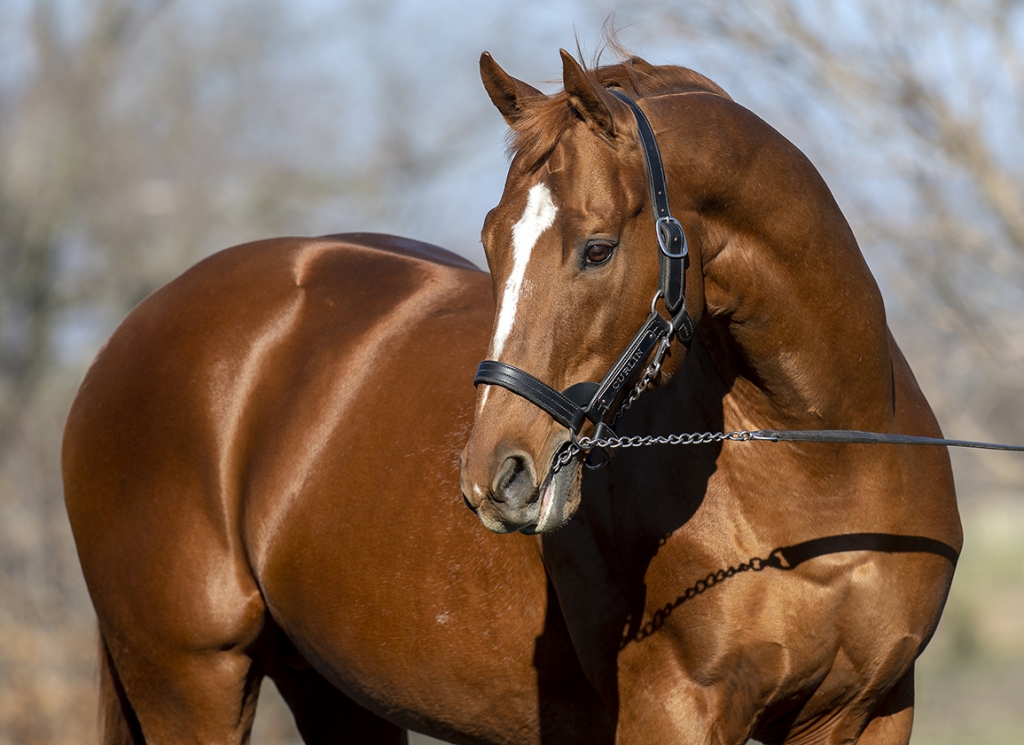
Curlin | Sarah Andrew
But there are one or two who basically match it, while also exceeding his ratios in other indices. Constitution's third crop has elevated him to 13th in the general sires' table, for instance, and his elite percentages beat Into Mischief in all bar Grade I winners. And, you know what, there's a sire out there who has credible claims to be saluted as stallion of the year, even with Into Mischief again breaking so much new ground. Over at Hill 'n' Dale, certainly, they'll be making a very coherent case for Curlin. While confined to third in the prizemoney standings, he has unequivocally outperformed even the champion when their respective indices with elite stock are compared.
Both have had 13 graded stakes winners in 2021, but Curlin has done so from almost exactly half the number of starters: 224 against the remarkable tally of 444 already noted for Into Mischief. These represent just about 5 and 3% respectively of their starters. And while Into Mischief has 32 graded stakes performers overall, compared with 24 for Curlin, in percentage terms that again favors the less prolific footprint of one (9.3% of starters) over the other (7.2%). As the icing on the cake, Curlin has had five Grade I winners and 9 Grade I podiums, at 1.9% and 3.5% of starters; compared with four and eight for Into Mischief (0.9 and 1.8%). Their overall stakes action, meanwhile, is broadly in step: Into Mischief's 29 black-type winners and 71 performers represent 6.5 and 16% of starters; Curlin's 19 and 41, 7.3 and 15.8%.
That's not to diminish Into Mischief in the slightest. He still has a lot of stock out there conceived at lower fees and we've all seen how seamlessly he has entwined his rising mare quality with his arc of achievement, immediately establishing himself as a Classic influence the moment he covered mares like the dam of Authentic at a bare $45,000. (That same spring was Curlin's first as a six-figure cover.) To be fair, Into Mischief had got a couple of colts from early crops that finished strongly for Derby/Preakness placings, but he has now definitively shown himself capable, with the right partners, of stretching his trademark speed through a second turn.
Nonetheless Curlin merits a special mention for a magnificent year. And his achievements should not be swamped by those disproportionate elements that have exalted two others above him in the table: the lucrative endeavors of Mystic Guide, in one case, and sheer scale in the other.
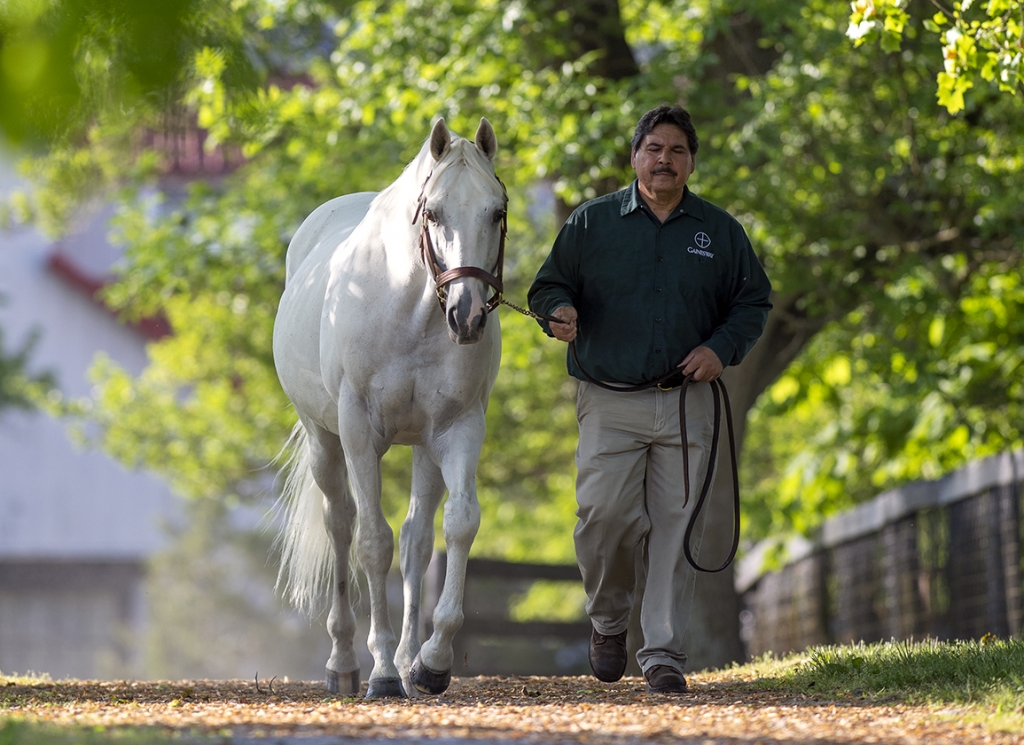
Tapit | Sarah Andrew
We also need to mention Tapit, for his sheer, metronomic consistency. In adding the later-blooming Flightline to the relentlessly accomplished Essential Quality, notably as his fourth GI Belmont S. winner, Tapit mounted a late charge for fifth place. Heading to the wire, he needed less than $1,500 from one of his last runners of the year to catch Speightstown–and so extend a unique distinction, across the last 12 years, of 11 finishes in the top five. Let's remember that Tapit previously held the prizemoney records both for general sires, meanwhile claimed by Into Mischief, and for freshmen, now in the hands of Gun Runner (following the Uncle Mo interregnum).
All the way through, remember, Tapit's books have been managed with commendable restraint at Gainesway, yet in August he became the highest-earning North American stallion of all time when overtaking Giant's Causeway. He has now passed $178 million, and needs another six graded stakes winners to reach 100 in 2022.
If favored by good health and longevity, perhaps Into Mischief can challenge for that record, too. Even as Tapit reached his milestone this summer, Into Mischief was breaking the $100-million barrier, and he's meanwhile already raced past $109 million. Whatever happens, there's no mistaking him as a champion for our times, and a fitting bequest by the late B. Wayne Hughes. It was as a struggling young stallion by Harlan's Holiday, of course, that Into Mischief famously inspired the kind of incentive scheme by which Spendthrift have meanwhile transformed the entire commercial breeding landscape. We now have the incredible state of affairs in which the three busiest stallions of 2021, with 682 covers between them, were all sons of Into Mischief: Goldencents and Authentic in the same barn, and Practical Joke at Ashford.
The latter must count himself unlucky to have landed in the same intake as Gun Runner, as runner-up in the first-crop sires' championship. As it was, the Three Chimneys freak has almost doubled the tally of his nearest pursuer, with Practical Joke gasping in his wake on $2,339,717. As noted above, Gun Runner has banked $4,209,350. Sometimes the laurels in this category can be divided across different indices, but the son of Candy Ride (Arg) also dominates by individual winners (28 beats 26 for Connect), wins (39) and, inevitably, across-the-board in terms of stakes action.
Admittedly Gun Runner is one of those stallions to have started out with a useful propensity for landing his best punches where they make most impact. Of four graded stakes performers, all four have won at that level, two in Grade Is, from a total of six black-type scorers. Uncle Mo, in accumulating the previous record, had a very similar pattern. He, too, had 28 winners but from more runners (73 against 62); he also included among them two Grade I scorers; he had two more graded stakes performers than Gun Runner, but one fewer such winners.
Uncle Mo's fee was promptly trebled from $25,000 to $75,000, and he stands at $160,000 for 2022. Gun Runner, having been clipped to $50,000 last spring, now smashes into the six-figure club at $125,000. Hats off to Gonçalo Torrealba and his team, to their partner Ron Winchell, and to Steve Asmussen who continues to develop the legacy of the horse he trained so expertly.
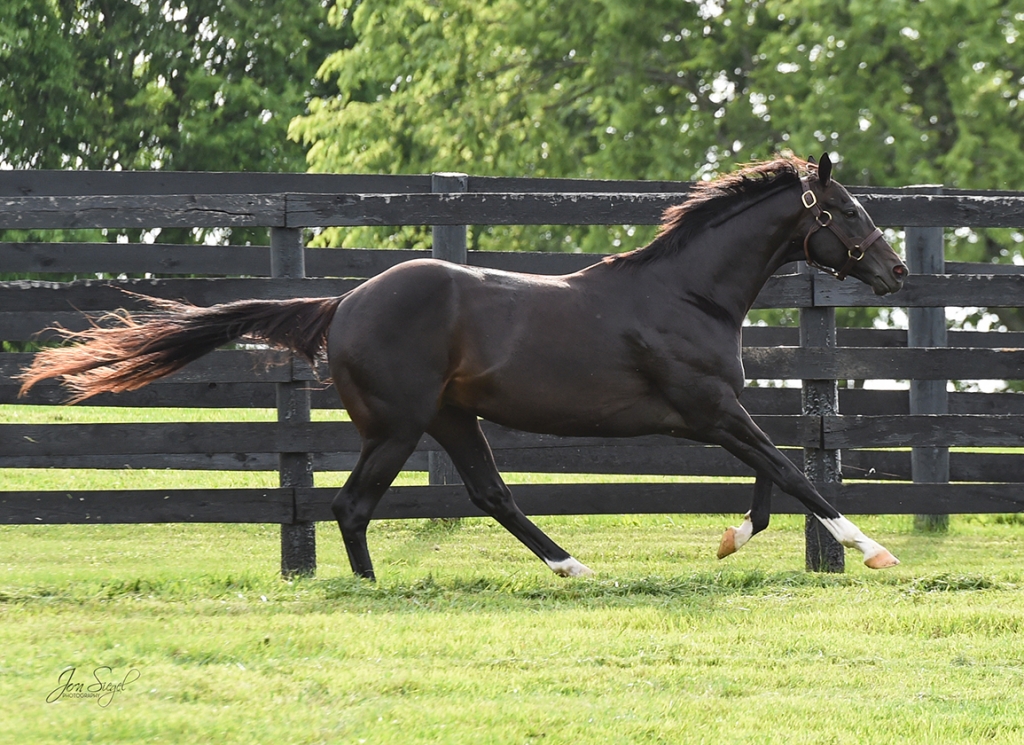
Not This Time | Jon Siegel
Champion second-crop sire with $5,458,779 is Not This Time, whose 13 stakes winners represent 10.24% of starters: the best ratio in the general sires' list, an outstanding achievement that consolidates his persisting claims as a precious late conduit for his sire Giant's Causeway.
Runner-up Nyquist ($4,807,628), top freshman last year, sent out as many as nine graded stakes performers, representing 7.4% of his starters, but had to wait until Slow Down Andy's GII Los Alamitos Futurity to get one of them into the winner's circle. From very similar numbers (Nyquist 121 starters, Not This Time 127), Not This Time clocked 68 winners against 50 for his rival at Darley, but the pair were exactly in step in terms of overall stakes action, with 18 black-type performers apiece.
But Not This Time is really on his way, now, given the upgrade in mares he will have earned with his breakout. Best of luck to him in 2022, and to all those hoping to find the next one whose time has come.
Not a subscriber? Click here to sign up for the daily PDF or alerts.





